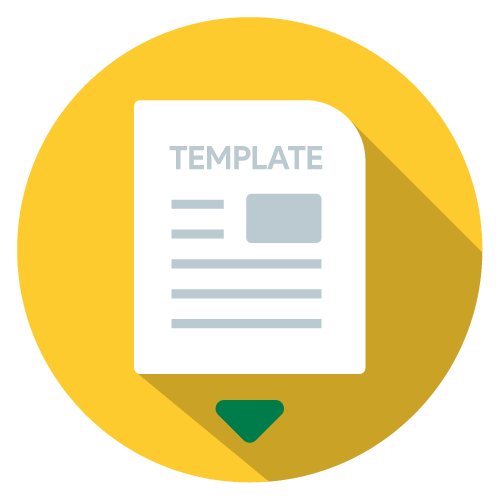Introduction to asking for payment
There are many reasons business owners might incur overdue payments.
For example, a customer might have lost their original invoice or simply forgotten to pay on time. These scenarios are why it’s important to learn how to ask for payment for the products or services that your company provides, including communicating payment terms clearly.
Whatever the reason for late payment may be, as per our expertise, you have to send a payment reminder email to get your customer to settle as quickly as possible. This involves following up on outstanding invoices.
However, sending a late payment reminder email to people is difficult. Especially if you’re worried about sounding rude or demanding to your clients.
In this guide, you’ll learn a few tips for writing a direct yet friendly late invoice email and how to follow up when your customer fails to pay.
Why is it important to ask for payment?
Drawing from our experience, following up on late payments keeps your cash flow healthy and is an excellent way to maintain a positive business relationship.
And through our practical knowledge, when you follow up on late payments, you garner your customer’s respect without jeopardizing your reputation or finances when you hold your customers accountable.
How to ask for payment professionally
To ask for payment politely and professionally from a client for the work completed, you must follow these steps:
Approach your customer for payment at the right time
Letting too much time pass after sending an overdue invoice significantly decreases your chances of getting paid. Politely requesting a payment a day after it’s due is a good idea – you never know when they might’ve just overlooked their outstanding invoices.
Check if your customer received an unpaid invoice
Before figuring out how to ask for payment again, make sure that you indeed have already requested payment.
You don’t want to follow up on an outstanding invoice only to find out you forgot to send one in the first place! This includes requesting a deposit or retainer upfront to secure the agreement. When sending payment reminders, make sure there were no miscommunications or errors on your end. A part of providing detailed invoices is asking the customer if they encountered any problems with receiving original invoice and sending them another copy if necessary.
Provide multiple payment options
Based on our observations, it’s possible that your customer hasn’t paid on time because they struggle to meet your payment options. Our investigation demonstrates that if you encounter this problem frequently, you might want to consider setting up a payment schedule and accepting multiple forms of payment like:
- Credit card.
- Money order.
- Check.
- Online payment portal.
If you’re wondering how to request payments, payment reminder emails are the best way to do so. Based on our firsthand experience, a phone call or request for payment via text message are options, but will likely annoy your customer.
What to include when asking for payment in a message
Our findings show that one of the most important elements in figuring out how to ask for payment is knowing what to include in your request.
When asking your client for payment in a message, make sure to include the following in your overdue invoice email.
- A direct subject line: Let your customer know what the email is about from the get-go. Write something like: “Payment for Invoice # [Number].” Providing the invoice number in the subject line makes it clear what payment is overdue.
- A copy of the invoice: Save your customer the time finding your initial email by attaching a copy of your original invoice. Make sure this document includes the agreed invoice amount, due date, and project reference. As per our expertise, you can also highlight invoice information as a way of clarifying anything customers may overlook.
- Your payment terms: Reiterate your payment terms, including the payment process, accepted payment methods, your late payment fee, and any other relevant payment details. Enforcing late payment fees when negotiating payment arrangements is one of the most effective ways to ensure timely payments.
- Your bank account or payment provider information: Don’t leave anything to guesswork – make it easy for your customer to pay you by providing your complete bank account or payment provider information.
Make sure that with each payment you receive, you record the client name and provide a receipt. This way, you ensure that there are no mistakes on your end before you request an overdue payment.
When to send a payment request email to a customer
Our research indicates that one important element to know how to ask for payment is knowing when to ask for payment.
You don’t want to let too much time pass before sending a reminding your customer of an unpaid invoice. Our investigation demonstrates that the best time to send your first reminder is when the invoice is due.
Your next question might be: how often should I follow up with a late-paying customer? Consider sending follow-up emails within regular intervals like:
- The day after the invoice is due.
- A week after the invoice is due.
- Two weeks after the invoice is due.
- A month after the invoice is due.
The longer it takes a customer to pay you, the more you’ll have to adjust your invoice late fee wording. Be professional but make sure they know your request is urgent – be firm, direct, and list the consequences they can expect from non-payment.
What does it mean to be rude when asking for your payment?
Based on our observations, part of figuring out how to ask for late payment is learning how to do so in a friendly way.
Talking about outstanding payments is never a comfortable conversation to have. In some cases, professionals will fail to follow up for fear of being rude. So, how do you get over this fear and ask for the compensation you deserve?
Before you send your follow-up email, consider the following:
- Is the project fully complete?
- Did you discuss your contract terms and methods before starting the project?
- Are you asking for the agreed-upon amount?
If you answered “yes” to all these questions, you could justify sending your customer a polite reminder about their payment. When being professional in your request letter, the most important thing to keep in mind is not to make things personal – don’t discuss why you need to be paid on time or how on-payment affects your business. Focus on making a clear demand and providing helpful information.
Dealing with late payments
When dealing with late payments, consult your payment terms. Remember to log the payment in your system, and follow up with your client.
Your payment terms will likely include a protocol for late payments, like one that is interest-based. If so, ensure your customer’s late payment includes this additional fee. Otherwise, you’ll have to follow up again.
Payment follow up email
Are you unsure of how to word your follow-up email reminder? Use this email template for reference.
“Hi there [Name],
We hope this email finds you well. We understand that it may be a busy time, but we wanted to remind you of your outstanding payment on invoice # [number] due [date]. We have attached an additional copy of the invoice for easy reference.
If you have any questions regarding your payment, please don’t hesitate to reach out. We are happy to answer any of your questions.
Thank you in advance,
[Your name]”
Our findings show that many companies use an invoice template to save time, but email templates improve efficiency as well. Hopefully this sample letter for payment reminders proves useful for you.
How to ask for payment if you’re still not getting paid?
Your method of how to ask for payment will be different if you have trouble reaching your customer. In the worst-case scenario, you might not get a response from your customer at all. While it can be frustrating, taking a more direct approach can work to your advantage.
Speak to the customer by phone
Drawing from experience, phone calls are harder to ignore compared to emails. If you can get your customer on the phone, they can’t dodge any questions or make up excuses. Plus, they might’ve simply overlooked your invoice email and just need a stronger nudge.
Consider cutting off future work
If you have other ongoing projects with your non-paying customer, pause existing work to reinforce their overdue invoice as an urgent problem. Pausing work can also mitigate the risk of going an additional few months without payment.
Research collection agencies
If a customer still refuses to pay, you may have no other option but to consult a collection agency. However, remember that using a collection agency should be your last resort, and through our practical knowledge, collecting payments this way will likely ruin your business relationship. Also, note that debt collectors will typically keep a percentage of the money they get back for you.
What if your backup plan doesn’t work?
Based on our observations, if none of the above tips work in your favor, now might be the best time to consider legal action. Some legal options for non-payment include:
- Placing a lien on your customer’s business.
- Going to a claims court or debt collection agency.
- Filing a civil case for larger amounts.
For corporate customers, you can also file complaints at institutions like the Better Business Bureau. These organizations specialize in things like speeding up overdue payments.
Tips and strategies for getting paid on time
Although it’s good to know how to ask for payment in case you do end up in a situation where your customer’s payment is overdue, based on our firsthand experience, it’s best to avoid getting into that situation in the first place.
One of the best ways to avoid chasing a payment that is days or weeks overdue is to make sure your customers pay on time from the beginning. Aside from offering discounts for early payments, here are a few tips for helping your customer avoid missing a payment deadline.
Provide the customer with precise records of your work
Keeping detailed and accurate records of your projects means you’ll always have proof of when you need to receive payment from customers. Using timekeeping software helps you keep detailed track of your billable hours and send these reports to your customers whenever necessary.
Pick a great payment processor
As much as possible, you’ll want to introduce multiple payment options to make it more convenient for customers to pay you. With more options on the table, customers are more likely to pay upfront and have no excuse for non-payment.
Popular payment processors that are easy to deploy and require low transaction fees include PayPal and Stripe, which are available internationally.
These services debit your client’s accounts and credit yours automatically. This resolves customer hesitation over the payment process.
Invoice efficiently
While you shouldn’t judge a book by its cover, our findings show that customers are more likely to pay businesses that provide clean and aesthetically pleasing invoices. When invoices are inaccurate and hard to read, customers may become discouraged from settling them or following up to ask questions.
An invoicing tool can help keep your documents consistent and automatically save information for repeat customers. Automated tools can also reduce the risk of human error and provide quick reminder options through email, phone calls, or SMS.
Draw a contract
Our research indicates that invoices are not legally binding, but contracts are. To avoid any issues regarding future invoicing, thoroughly outline your payment policy through a contract agreement. A solid contract should include the following information:
- The parties involved (you and your customer).
- The scope of the project.
- The date for project delivery.
- Payment terms and methods.
- Penalty fees in the case of late payment.
- An outline of potential legal action in case of a dispute.
While a comprehensive contract doesn’t guarantee on-time payment, our investigation demonstrates that it’ll make customers less likely to deviate from your payment schedule.
Ask for an advance deposit
Sometimes, it’s hard to scope out the customers who are willing to pay from those who aren’t.
One of the best ways to determine whether a customer is willing to compensate you fully and on time is to impose an advance deposit or down payment. This amount is up to your discretion, though our findings show that most freelancers and businesses are charging a down payment of 40% and 50% of the final bill.
Once partial funds are deposited into your account, your client is less likely to evade a full payment.
If you think a higher advance deposit might scare away your customers, you can consider decreasing this number or asking for incremental payments when you achieve specific project milestones. It might take some experimentation to find the right balance for your business’ finances.
Download your invoicing email templates for free
Unsure of how to word your payment follow-up email?
Use these free email templates to send invoice follow-ups and payment requests to your customers.
If you don’t see the download form, download template here.

Key takeaways
Knowing how to ask for payment is a key skill for every business owner. When sending a payment reminder letter, you can avoid being rude by using firm yet friendly and professional language. To ensure that you reach the goals you want, take precautions to provide all the information your customer needs to pay you on time.
Are you looking for a better way to keep track of your customers and what they owe you? Method CRM is an all-in-one CRM solution that syncs with QuickBooks. Try it now and make handing out invoices easier than ever!
How to ask for payments FAQs
What is the process for requesting payment?
The process for requesting payment varies between organizations, but it generally consists of the same fundamental steps. To request payment:
- Consult your invoice agreement and terms of payment.
- Draft a message that outlines the conditions of the invoice and requests payment.
- Deliver the message through your client’s preferred means of communication.
What is the most professional way to ask for payment?
The most professional way to ask for payment is through an email or direct letter reminder. Make sure this letter is:
- Clear and concise.
- Polite.
- Timely.
Where do I keep track of payments?
Keeping track of payments is a crucial part of every business. There are a few ways to do so, but the best is to use CRM software like Method CRM.
With Method CRM, you easily keep track of everything that goes on in your business within a single interface, including payment history. Better yet, schedule automatic alerts and reminder emails when an invoice is overdue with Method CRM.
Get paid on time, every time, with Method CRM. See how!
Image credit: Towfiqu Barbhuiya via Unsplash


